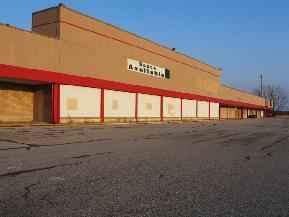Green building standards may be healthy for the environment, but must it be adapted so it’s healthy for hospital patients, medical staff and researchers? A growing number of treatment and research facilities are finding out, with some, including the Oregon Health & Science University Center for Health & Healing and the University of California at San Franciso’s Institute for Regenerative Medicine, achieving or seeking high levels of LEED certification.
Many opportunities to green medical facilities are similar to any large commercial building–solar panels, green roofs and use of fluorescent bulbs and photovoltaics can be done anywhere. But hospitals, research laboratories and dentist offices do pose certain special challenges, given their intense use of water for cooling, special ventilation needs, material concerns and 24/7 operation.
“While some things are the same, a lot is different about hospitals,” says Alan Scott, a principal at Portland, OR-based consultancy Green Building Services. “For example, unlike an office building–where water use predominantly is in the bathrooms–in hospitals it is used for cooling equipment. In fact, because of the nature of its occupancy, a lot of cooling systems are in use.”
And though the trend toward more outside air also has reached hospitals and clinics, air circulation is another issue where hospitals differ somewhat. Medical facilities require more stringent types of filtration for treatment and surgical areas to prevent contamination. OHSU used natural ventilation and outside air for cooling some areas of the building, but used special filtration that removes 90% of particles larger than one micron (vs. a standard 70% removal of particles larger than 3 microns) in medical treatment and outpatient surgery areas.
“They do a better job of cleaning the air, but use more energy,” sums-up John McMichael, a principal of Interface Engineering, part of the design and construction team for OHSU. “You look for better technology, and make your filters bigger. But bigger filters cost more.” The result was the company looked to offset that cost by using smaller air handlers to keep the budget under control.
“There is a tremendous amount of plastic in health care, and a lot of single use items,” explains Tom Badrick, sustainability coordinator at Legacy Health Systems in Portland, OR. “We recycle 53% of all of our waste.” Those concerned about the germ value of recycling plastic from hospitals should remember one thing–soda bottles, which are routinely recycled, contact a virtual germ factory, the human mouth.
Natural linoleum is a greener material than typical flooring, with a lower maintenance sot and equal or superior infection control. “But it is more expensive, and it doesn’t hold a shine as well,” giving people the false impression it isn’t clean, Scott comments.
The trend does not end with patient treatment facilities. The University of California San Francisco’s Institute for Regenerative Medicine, a research facility now under construction, will apply for Silver LEED status. While biocontainment is not a huge factor because of the nature of its research, but the lab will use eight fume hoods to control possible contaminants, while helping to change the air for researcher health and comfort. Refrigeration, on the other hand, is a huge consideration.
“We’re dealing with stuff in petri dishes that must be kept at -80 degrees Celsius,” says Michael Badé, director of capital programs at UCSF. “That takes a lot of power.”
It also takes a lot of cool water, and here, too, green techniques are helping. “The key is not to dump [the water],” Badé explains. “We’ll use cooling loops, connecting the cooling to the central utilities plant. This is highly efficient and can create steam, as well. We have distinct heating and cooling, about 25% more efficient than what we would otherwise achieve.”
UCSF is not alone in looking for ways to be more energy-efficient, he notes. Laboratories at the University of Pennsylvania, Johns Hopkins and Harvard, among others, are also at the cutting edge of efficiency technology. Ironically, hospitals have been more concerned with equipment and patient care–and only now are focusing on sustainable facilities. “Health care tends to be filled with conservative people,” Badrick reminds.
Tax incentives from various states are helping to increase awareness, and the US Green Building Council is working on a LEED for Healthcare Green Building rating system, which addresses increased sensitivity to chemicals and pollutants, access to natural spaces and traveling distances from parking facilities. The result can help to attract and retain employees, and help the financial viability of the facilities, as well as contributing to patient and staff health.
Peter L. Bardwell–principal at BARDWELL+associates LLC, Columbus, Ohio, and a leader at the American Institute of Architects Academy of Architecture for Health, in Architecture + Design– wrote in a tutorial from Health Facilities Management magazine, “Sustainability, as applied to a health care facility, is more than the achievement of a ‘green’ building. A truly sustainable solution extends to the long-term measures of success for an institution.”
McMichael enumerates, “Many people now want a green facility. It is more energy-efficient, so you get low utility bills. You get better air quality and so, healthier employees. It’s a great thing.”





 Copyright © 2024 ALM Global, LLC. All Rights Reserved.
Copyright © 2024 ALM Global, LLC. All Rights Reserved.











